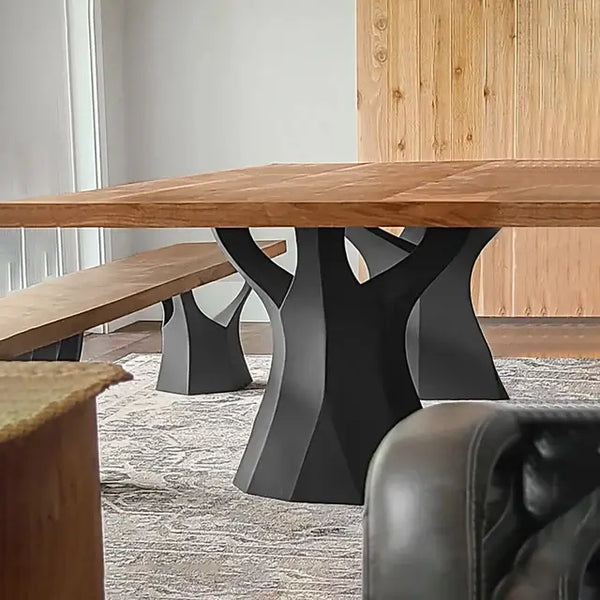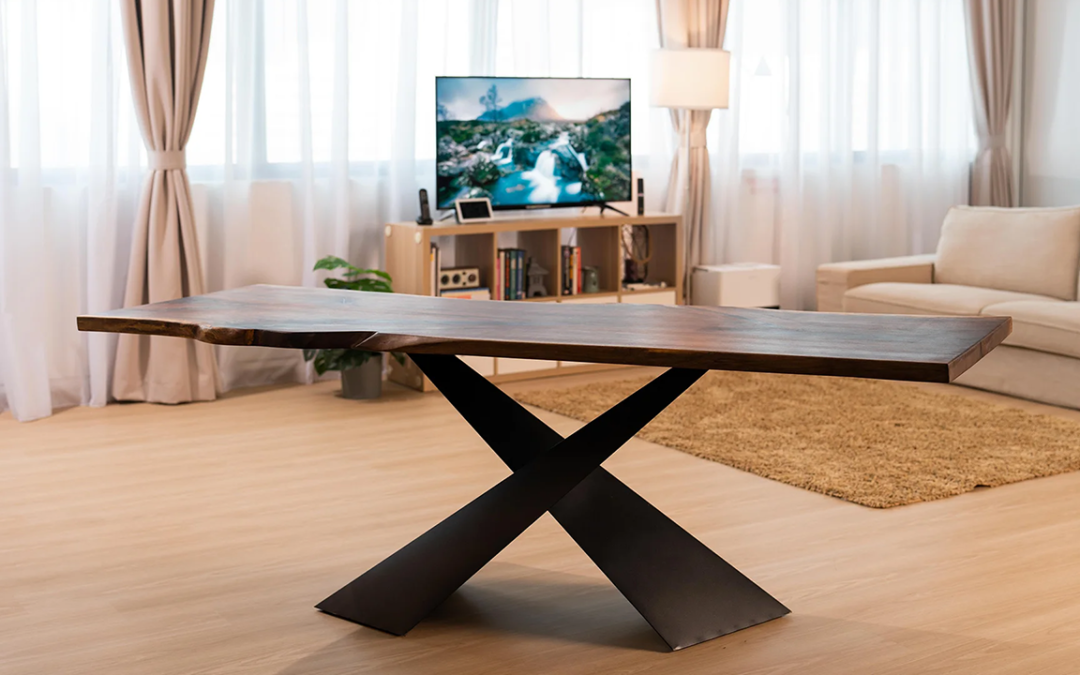Dining Room Table Legs: A Guide to Selecting the Right Style for Your Home
From Conventional to Modern: Find the Perfect Dining-room Table Legs for Your Design
While traditional designs such as cabriole and transformed legs evoke a sense of ageless elegance, contemporary designs like barrette and geometric alternatives offer a possibility for striking aesthetic passion. As you think about these aspects, the question stays: just how can you seamlessly integrate these diverse leg styles to create a harmonious eating experience?
Understanding Table Leg Styles
The variety of dining-room table leg designs can substantially affect both the appearances and performance of the space. Each leg style adds distinct visual elements and useful functions, dealing with diverse style choices and usage demands. Understanding these designs is essential for picking the ideal table that straightens with your overall interior decoration vision.
As an example, tapered legs supply a tidy, traditional look that can boost a room's style, while stand bases offer security and maximize legroom, making them suitable for smaller sized areas. Hairpin legs, a characteristic of mid-century contemporary style, introduce an industrial panache, permitting a ventilated, open feeling. Similarly, trestle legs stimulate rustic appeal, providing robust assistance and a feeling of eternity.
Moreover, the selection of materials plays a significant function. Wooden legs can bring warmth and texture, whereas steel choices usually convey a smooth, modern vibe. Inevitably, understanding table leg styles is crucial for developing a natural eating location that reflects individual design while making certain practicality and comfort. By attentively taking into consideration these components, you can enhance both the aesthetic and practical allure of your dining area.
Traditional Table Leg Options
When picking dining-room table legs, typical options typically symbolize ageless style and craftsmanship. These layouts mirror an abundant heritage and a dedication to high quality, making them perfect for those who appreciate traditional looks.
Among the most iconic traditional leg designs is the cabriole leg, defined by its graceful curved form. This style typically features attractive makings and is most commonly found in Queen Anne and Chippendale furnishings. One more popular alternative is the turned leg, which flaunts a collection of smooth, rounded shapes that supply a timeless look while preserving stability.
Additionally, the straight leg, while simple, uses a basic and strong structure that can mix perfectly with a range of tabletop designs. For those drawn to ornate detailing, claw-and-ball feet legs stimulate a sense of splendour and can work as a spectacular focal factor in any eating space.
Last but not least, pedestal bases, although not strictly legs, supply an alternate traditional option that enables enough legroom and can be beautifully carved. Each of these traditional leg styles contributes to the general atmosphere of an eating space, weding function with aesthetic allure.

Modern Table Leg Styles
Modern table leg styles supply a varied variety of designs that emphasize clean lines and innovative materials. These layouts usually focus on performance while functioning as striking focal factors within a dining space. Minimal appearances are widespread, with legs crafted from products such as steel, glass, and crafted wood, which add to a contemporary and airy feeling.
One popular style is the hairpin leg, defined by its slim, tapered framework that gives security without frustrating the table you can find out more top (dining room table legs). This design is typically located in mid-century modern furnishings and can effortlessly match different table shapes. One more fad is using geometric shapes, where legs might tackle asymmetrical or angular forms, including visual interest and a touch of creativity

Mixing Designs for One-of-a-kind Rooms
Commonly, property owners seek to develop unique dining rooms that show their personal design by blending numerous layout components. This strategy enables the incorporation of varied aesthetic appeals, resulting in a harmonious yet distinctive environment. For circumstances, pairing a rustic wood table with sleek, modern-day steel legs can produce a captivating contrast that boosts the room's total appeal.
Additionally, incorporating vintage table legs with modern tabletops can evoke a feeling of background while preserving a contemporary sensibility. Such mixes not just display private preference however likewise encourage imagination, enabling property owners to curate an area that really feels both personal and inviting.
Shade plays an essential role in this blending process; picking table legs that match or comparison with the existing color pattern can improve aesthetic interest. Whitewashed legs can soften the boldness discover here of a dark table surface, producing a well balanced aesthetic.
Tips for Choosing the Right Legs
Choosing the right table legs is crucial for achieving both performance and visual charm in your dining room. Begin by thinking about the total design of your room. Conventional settings take advantage of legs that include detailed carvings or transformed designs, while modern rooms may call for sleek, minimal styles.
Next, assess the height and security of the legs. dining room table legs. Common table vary in between 28 to 30 explanation inches in elevation, so make sure the legs match this dimension for convenience. In addition, durable products, such as wood or steel, can boost stability and long life
Review the leg form too-- alternatives consist of straight, tapered, or stand layouts. Straight legs provide a timeless look, while conical legs can include a touch of elegance. Pedestal bases offer adequate legroom and are perfect for smaller areas.
Final Thought
In summary, picking the ideal eating space table legs calls for mindful factor to consider of both standard and modern designs. Traditional alternatives such as cabriole and turned legs provide classic elegance, while modern layouts like barrette and geometric shapes give a contemporary touch. By integrating leg style, height, and material with the overall decoration, a natural and welcoming atmosphere can be achieved. Inevitably, the chosen table legs ought to show the desired aesthetic, enhancing the dining experience within the room.
The range of eating area table leg styles can substantially affect both the aesthetic appeals and performance of the space. Eventually, comprehending table leg styles is crucial for developing a natural dining location that mirrors individual design while making certain practicality and comfort.One of the most renowned conventional leg styles is the cabriole leg, characterized by its graceful curved shape. Straight legs provide a timeless look, while conical legs can add a touch of beauty.In summary, choosing the optimal dining room table legs requires mindful factor to consider of both typical and modern-day styles.